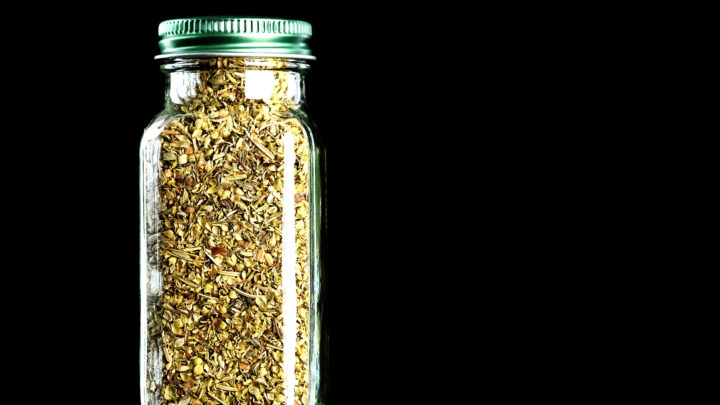
We all love an all-in-one seasoning. A mixture of oregano, basil, thyme, marjoram, rosemary, savory, sage, and other spices, Italian seasoning brings a combination of savory, earthy, and somewhat sweet flavors to any dish and takes your cooking to another level. Italian seasoning is a must-have in your kitchen if you enjoy cooking Italian-American dishes like meatballs, lasagna, and chicken parmesan.
Although you can find Italian seasoning at the condiments and spices aisle of your local stores, you might run out of it and don’t have time to purchase a new one. Or, you could be following a recipe that requires Italian seasoning, but you don't like the taste or aroma. In these cases, finding a perfect substitute comes in handy.
Since Italian seasoning is a mixture of different herbs and spices, the best option for you is to make your own. You can also use basil, oregano, thyme, rosemary, and marjoram on its own or a mixture of two or three. Keep on reading to know which substitute works best for you.
Best Italian Seasoning Substitute
Homemade Italian Seasoning
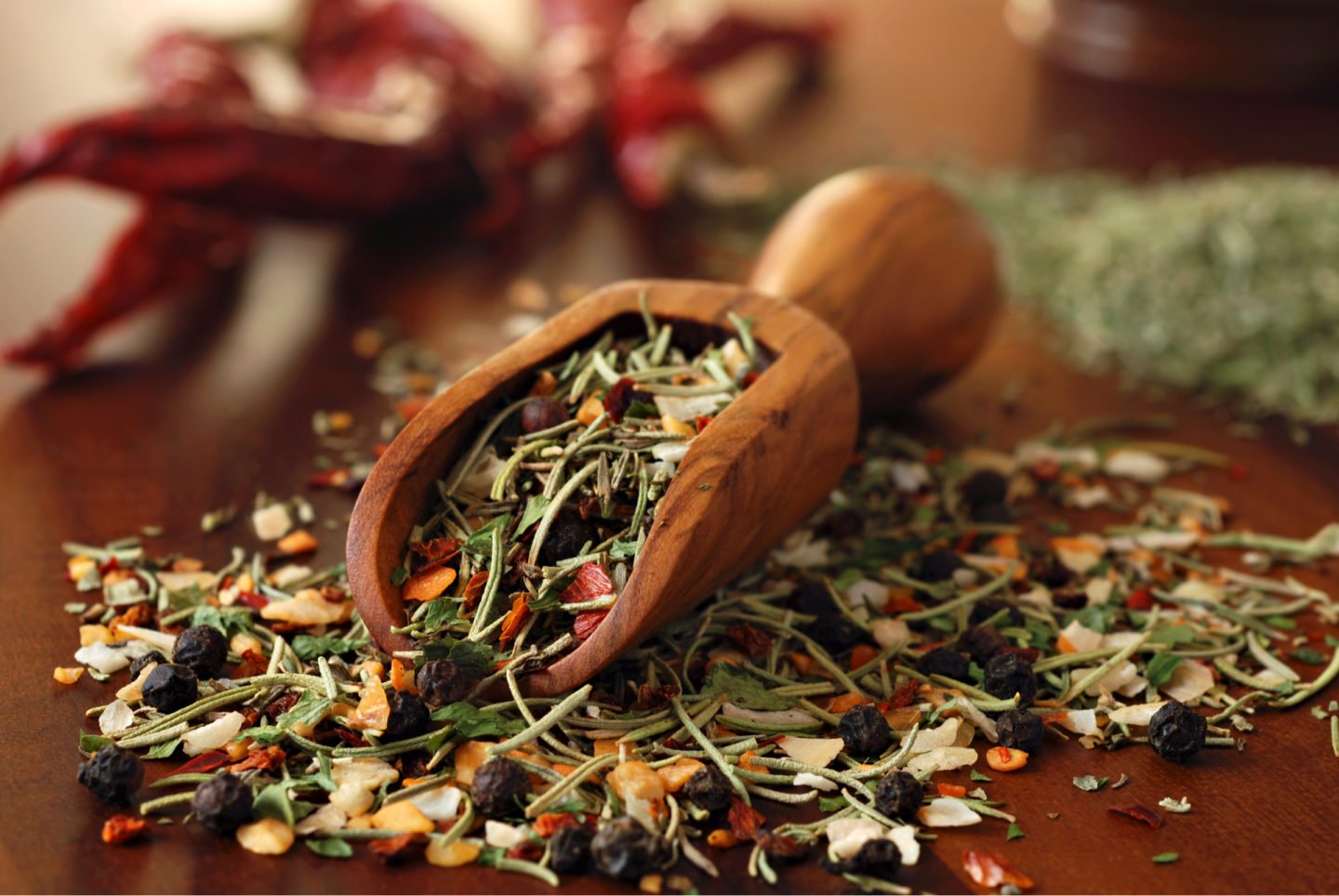
If you don't have a container of authentic Italian seasoning yet have some herbs that go into the mixture in your spice cabinet, making your homemade Italian seasoning is the best option. Simply combine equal portions of dried basil, rosemary, oregano, thyme, and sage. To make it uniquely your own, add red chili pepper flakes or a pinch of garlic powder, depending on your preference.
The most significant drawback of this substitute has to be the necessity to have as many herbs as the original bottle has. However, you can just make use of what’s on your shelves and mix equal parts, throw them in a food processor, and store the blended herbs in a dry container. Moreover, if you dislike an ingredient, you can also try omitting them, as the combination solely depends on your liking.
Fresh Basil and Oregano
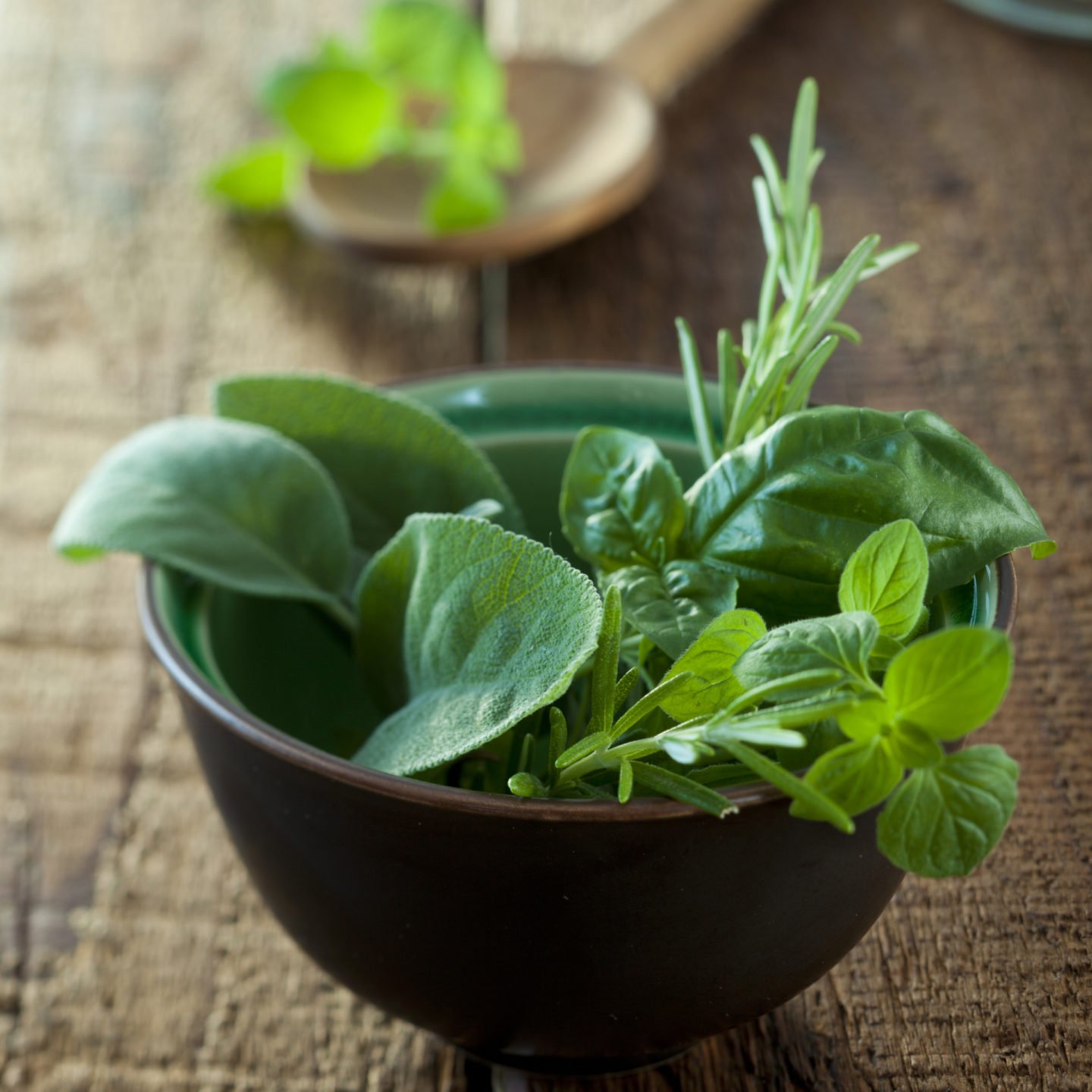
Fresh herbs are the next best thing in the absence of Italian seasoning. Basil and oregano are the most robust spices in Italian seasoning, so you can use these two fresh herbs instead of buying all the spices. They provide the signature notes of the seasoning, while the fresh aroma and taste add more dimension to any recipe.
One thing to keep in mind is the fact that dried herbs own a lot more full-bodied taste than fresh herbs, so you'll need to use more fresh herbs to get the flavor you want in your meal. Fresh herbs, unlike dried herbs, lose their taste when cooked for lengthy periods; thus, they should be added at the end of your dish rather than simmering to impart their characteristics adequately.
Dried Basil, Oregano, and Thyme
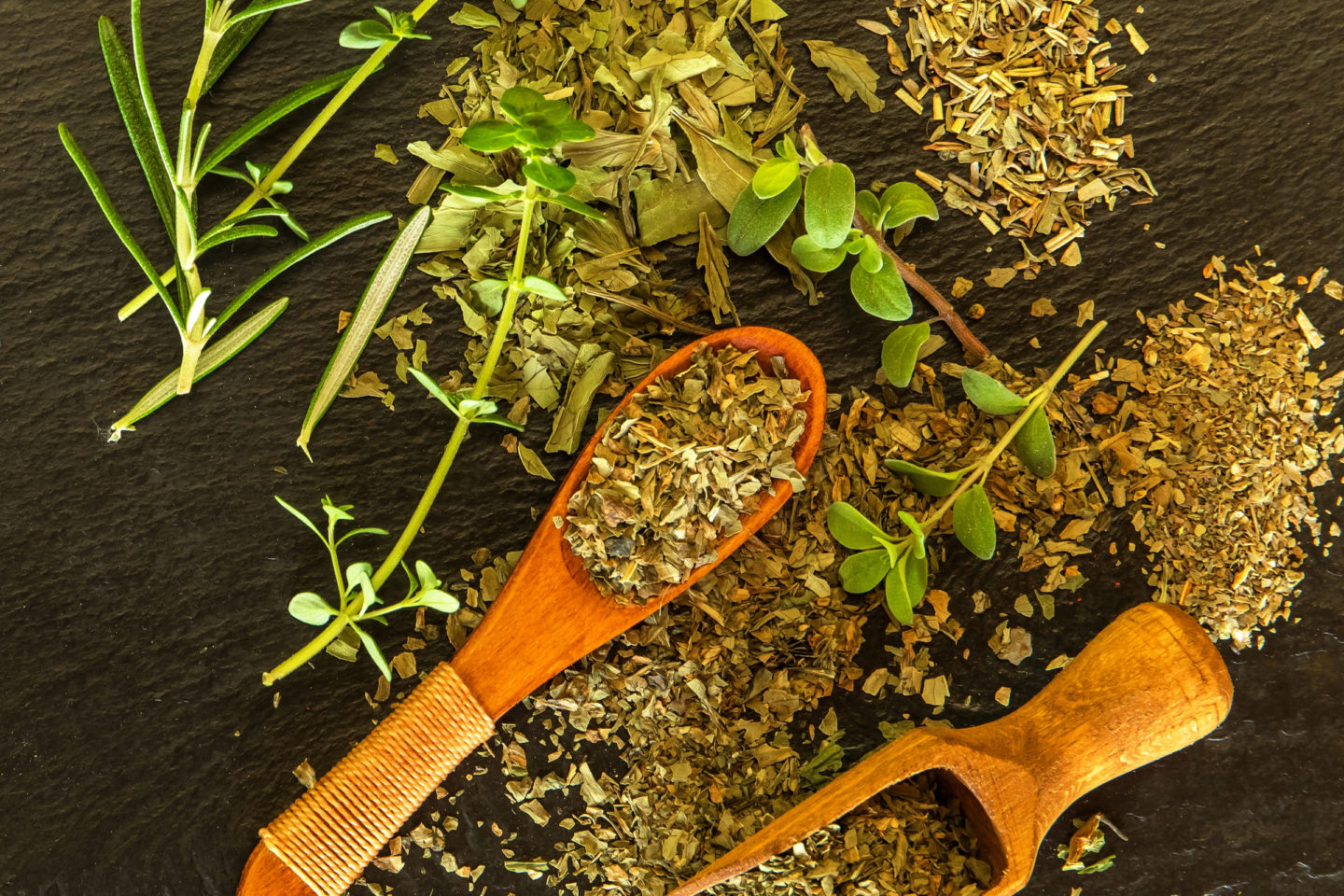
Using dried herbs provides a more concentrated flavor to your dishes. If you ever have your hands on thyme, you can add it to your basil and oregano to achieve a closer taste with the commercially available Italian seasoning. The addition of thyme grants a sweeter, floral scent while giving a sharp minty flavor.
This goes great with roasted fish, poultry, Tuscan potatoes, and lemon and garlic-forward foods. Your basil and oregano combination can be used in place of the Italian spice in your recipe with a 1:1 ratio. If you have thyme, use one teaspoon dried oregano, ½ teaspoon dried basil, and ½ teaspoon dry thyme.
Dried Basil
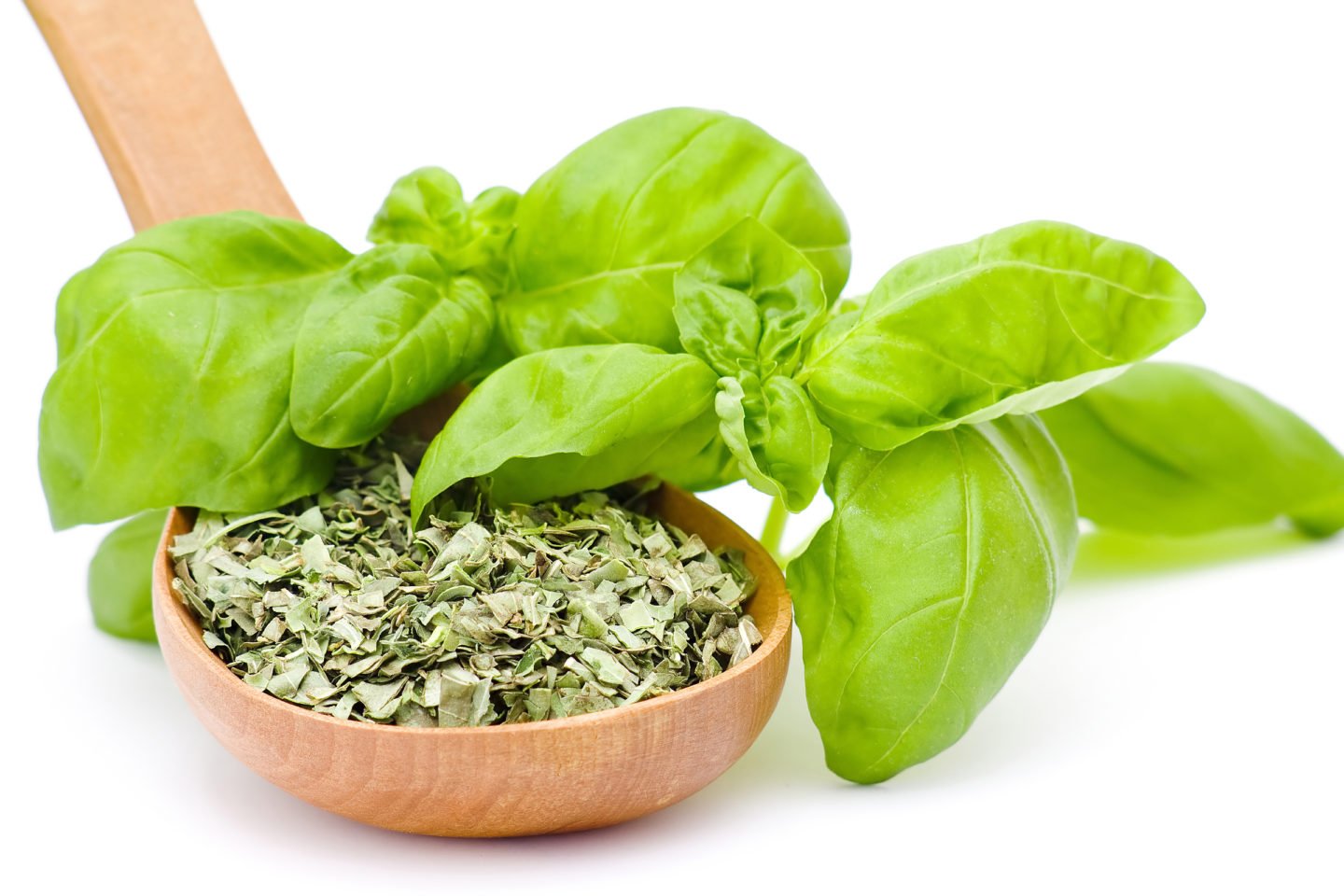
Often used as a stand-alone dried herb, basil offers a sweet and savory taste profile, with mint, anise, and pepper overtones. While this fragrant herb has distinct black pepper tones at first, it eventually provides a note of sweetness to any meal. If basil is the only herb in your pantry at the moment, it can be a good substitute when in a pinch.
Since basil is one of the most notable herbs in Italian seasoning, you can try replacing every teaspoon of the seasoning with half a teaspoon of dried basil to avoid an overpowering taste and aroma. You can also add salt, pepper, and garlic powder if you have them.
Dried Oregano
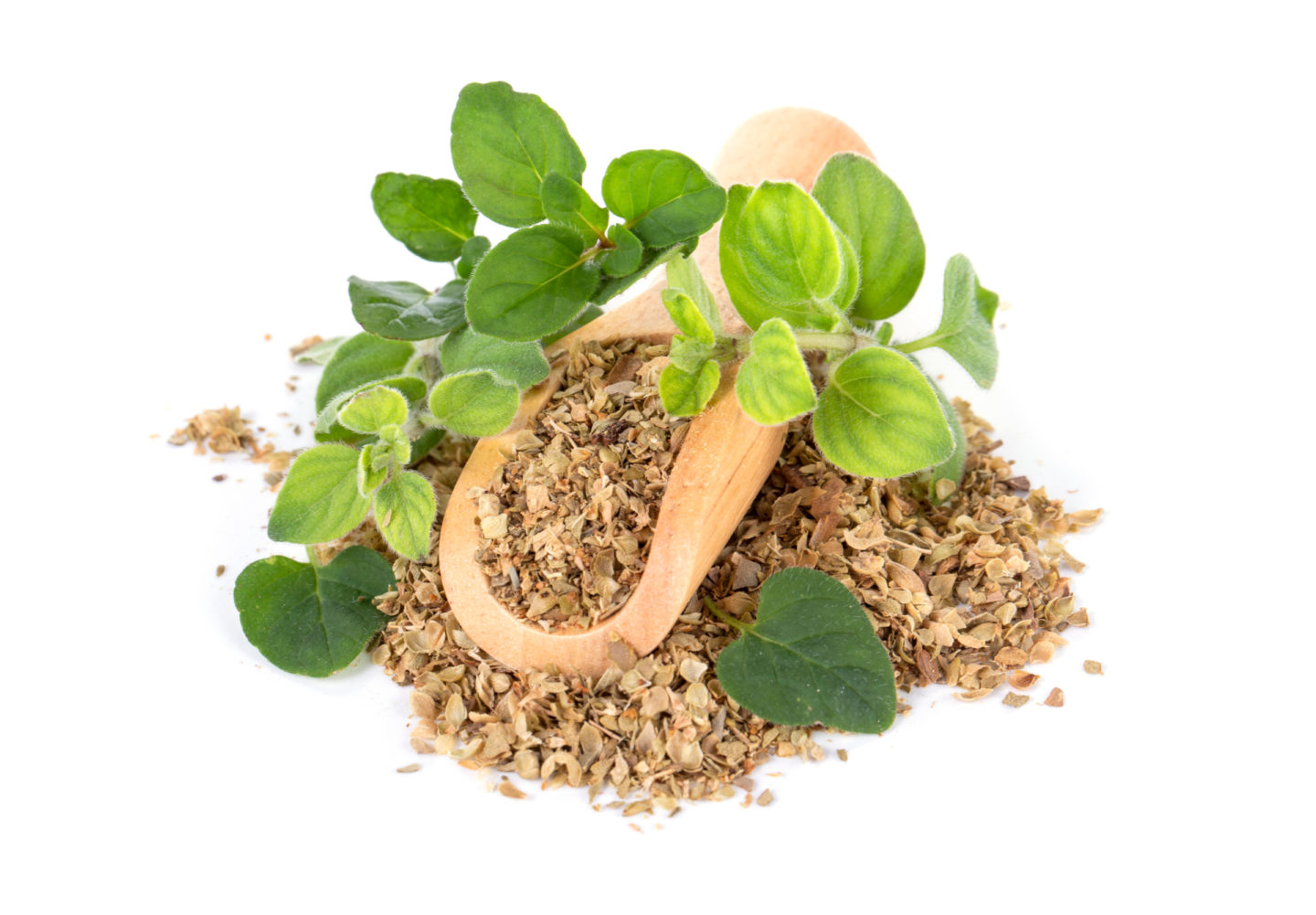
Oregano owns a strong earthy flavor, with a slight bitterness reminiscent of the fragrant organic component camphor. It has a perfect proportion between sweet and spicy. The wide diversity of essential oils in oregano, such as limonene, pinene, thymol, and carvacrol, contribute to its distinct flavor.
If you’re making a dish that involves tomatoes and calls for Italian seasoning, you can simply add ½ teaspoon of this dried herb for every tablespoon of seasoning required. The addition of salt, pepper, and garlic powder is optional but makes a huge difference.
Dried Rosemary
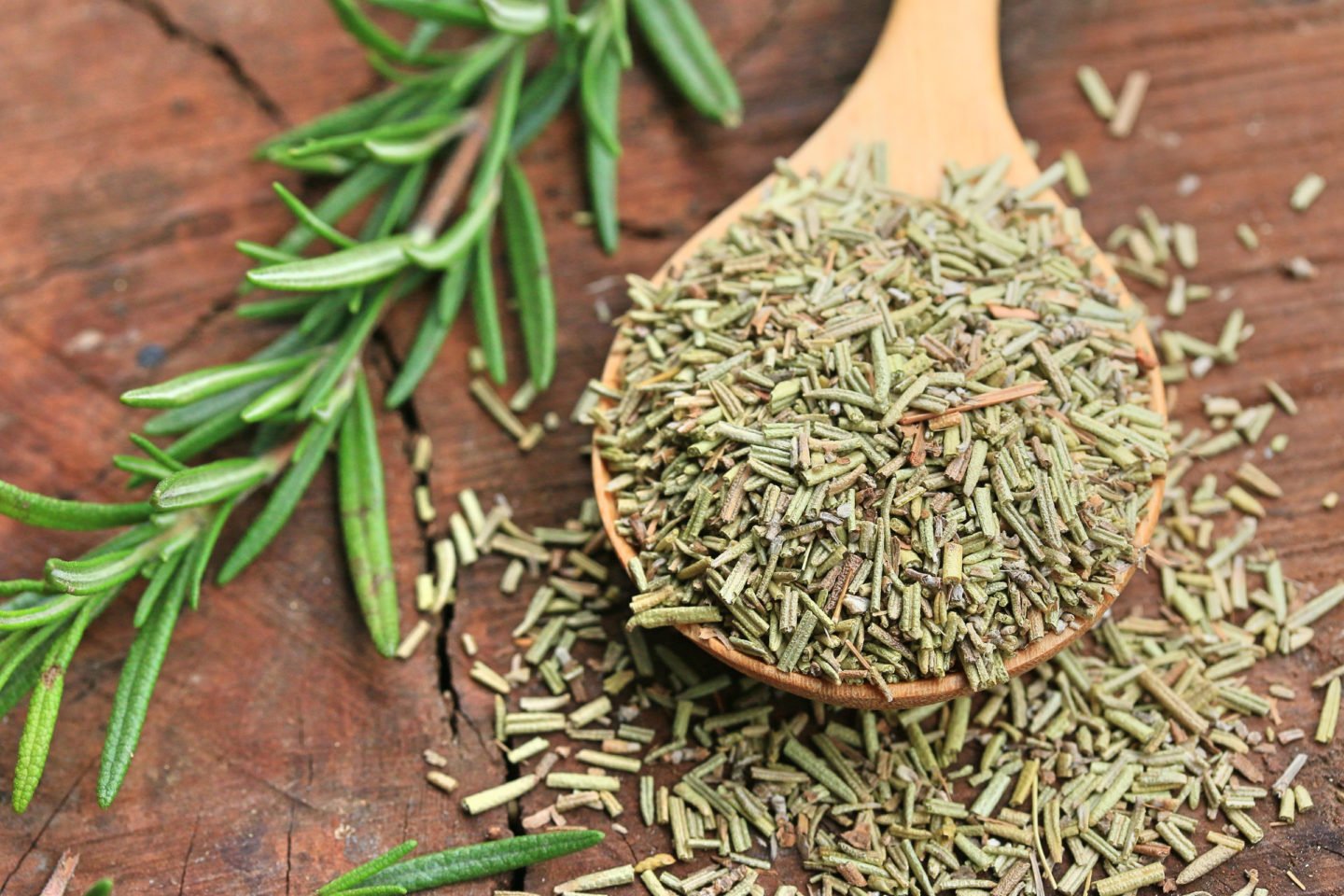
Rosemary is a very aromatic herb with a similarly strong flavor. It has been characterized as minty, sage-like, and peppery, with a lemony-pine taste. In the absence of Italian seasoning, rosemary can be used, but note that a little goes a long way.
With this spice, you can season meats, notably lamb, hog, and chicken. It also works well with potatoes, beans, and peas. You can start by replacing each teaspoon of Italian seasoning with ⅛ teaspoon of dried rosemary. Its intense aroma might come off overpowering, but you can balance it out by adding other herbs like sage and pepper.
Marjoram
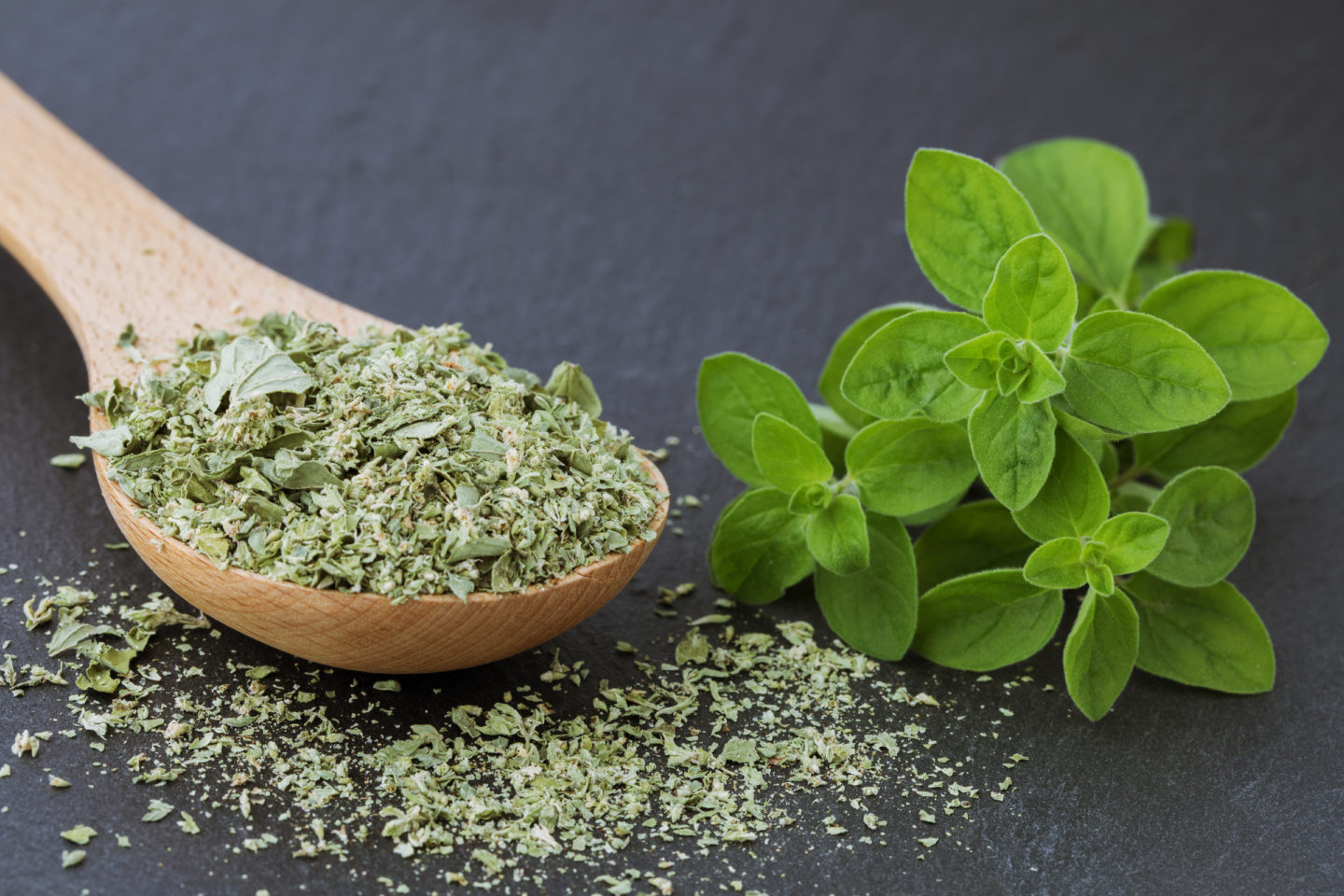
Marjoram is another ingredient in Italian seasoning. It is gentler than oregano. It has a flavor comparable to thyme but is sweeter with a richer aroma. It's hot, a bit sour, and a tad bitter.
Marjoram is an excellent addition if you're following recipes that contain rice, beans, tomatoes, and various vegetables. You may add it to a fresh salad as a garnish. Alternatively, put it into minced meat mixes.
Herbes de Provence
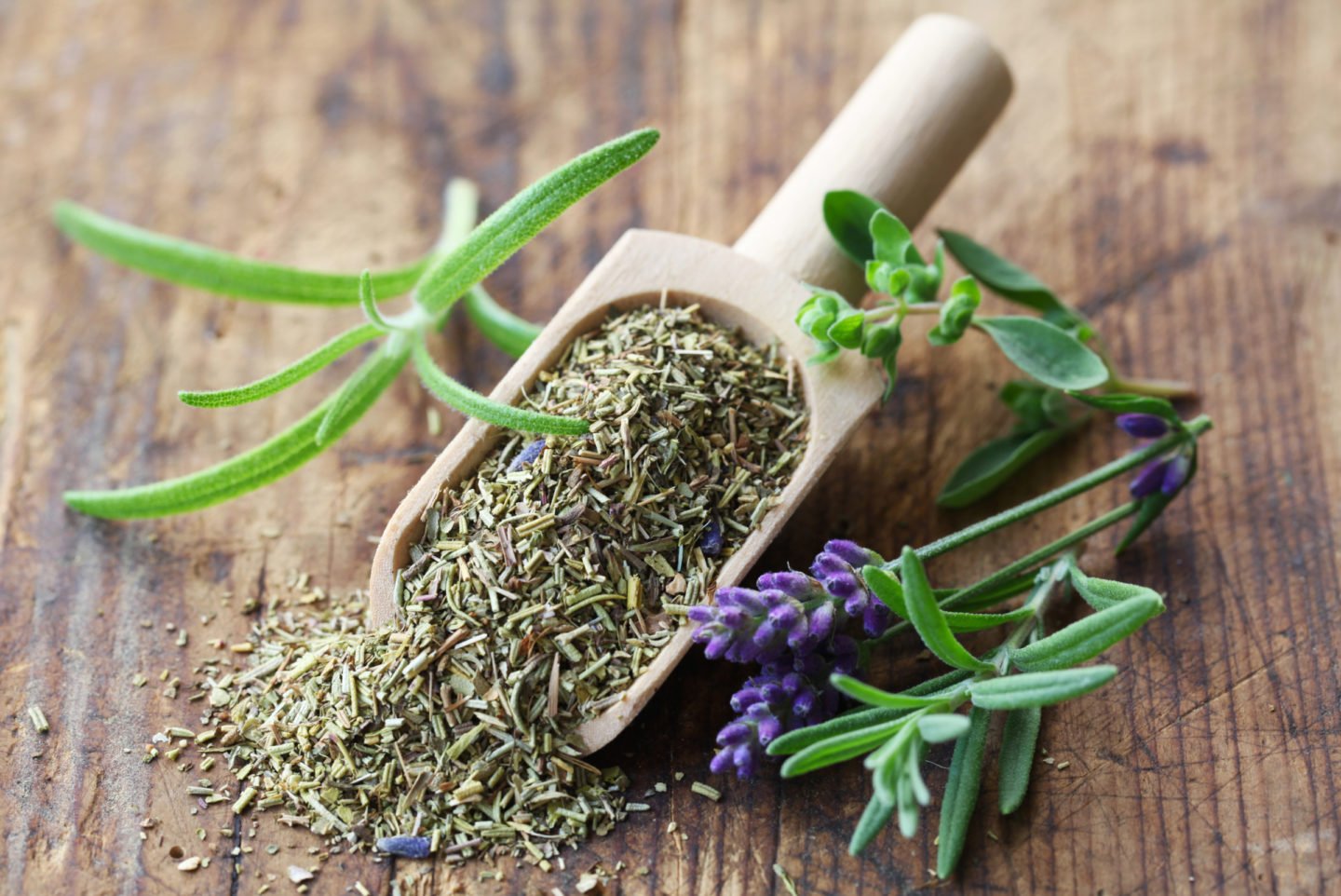
Herbes de Provence as a mix was made famous in the 1970s, initially referring to plants that grow inside the Provence area of France. This seasoning is made up of Italian seasoning's primary herbs but with a few additions: marjoram, fennel seed, lavender, sage, and summer savory. One distinguishing characteristic of Herbes de Provence is the absence of basil in the ingredient list.
Herbes de Provence is distinguished by its notes of thyme and rosemary rather than basil and oregano, as is the case with Italian seasoning. It is an excellent addition to marinades, grilled veggies, and meats, granting them a flavor boost. Due to its close likeness with Italian seasoning, we recommend a 1:1 ratio when used as a substitute.
Herbes de la Garrigue
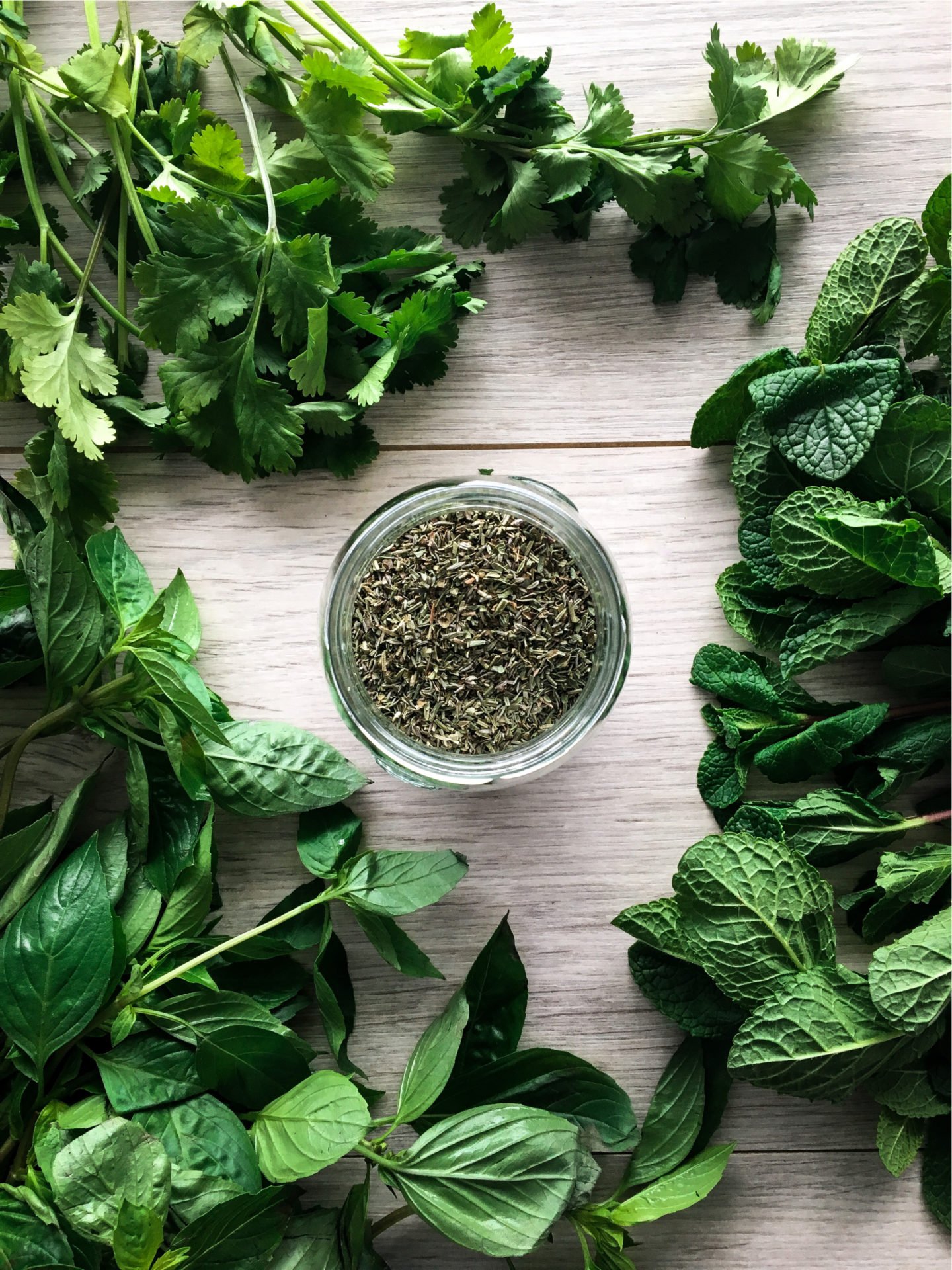
Herbes de la garrigue is a fancy-sounding combination usually composed of herbs that grow in the southwestern portion of France. It comprises basil, lavender, fennel, marjoram, sage, rosemary, and thyme, including two more herbs: bay leaf powder and mint. Without the ready-made Herbes de Provence on hand, you won't probably be able to make this spice mixture.
Herbes de la garrigue don't have as much of a floral flavor as herbes de Provence, and the bay leaf powder and mint are a welcome complement to many Italian meals. If you're creating a stew, beans, or sausages that require Italian flavor, you'll be astonished at how well this substitute works. We recommend using a 1:1 ratio when using as a substitute.
Pizza Seasoning
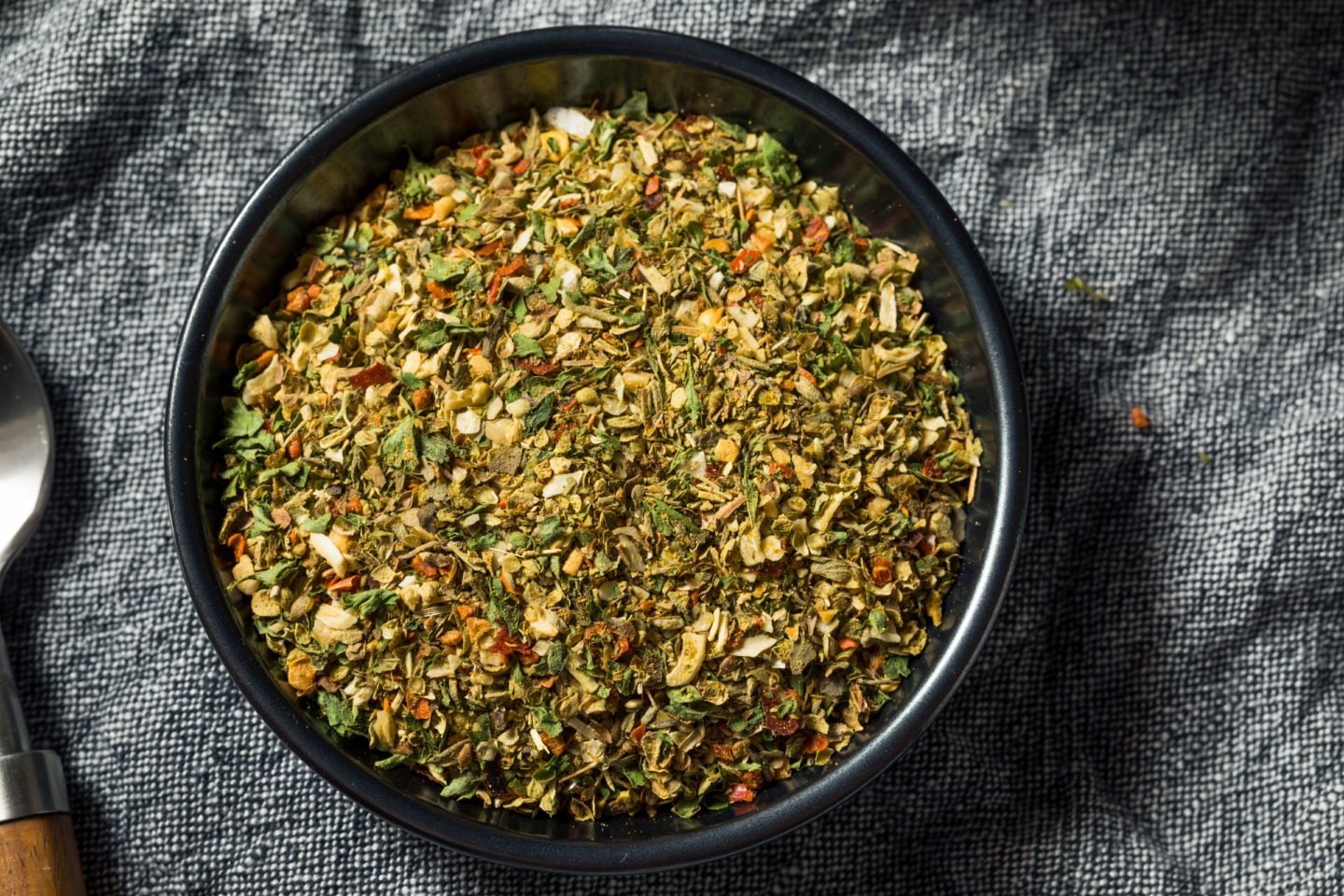
Pizza seasoning is another substitute. Aside from its availability, it also contains herbs found in Italian seasoning. Typical pizza seasoning blends contain garlic powder, salt, onion powder, red pepper flakes, smoked paprika, thyme, and nutritional yeast, making them an excellent Italian seasoning substitute.
Of course, it's usually sprinkled on top of a pizza or mixed into the dough to improve the flavor, but you can also add it to your homemade tomato sauce for a richer flavor or toss it into a minestrone for a punch. When used as a substitute, you can start adding ½ teaspoon of the spice blend for every teaspoon of Italian seasoning mentioned in the recipe.
Italian Dressing Packets

In a classic Italian seasoning mix, the two principal herbs in Italian seasoning, oregano, and basil, are combined with thyme and various additional ingredients such as sugar, salt, onion powder, pepper, and parsley.
Use the Italian dressing seasoning package in your cabinet to season the ground beef in a meat sauce or baked pasta meal. Because, unlike Italian seasoning, the package already contains salt, don't add any more salt to your dish. As for the substitution, you can start by replacing every teaspoon of Italian seasoning with ½ teaspoon of the seasoning mix and add when necessary.
Greek Seasoning
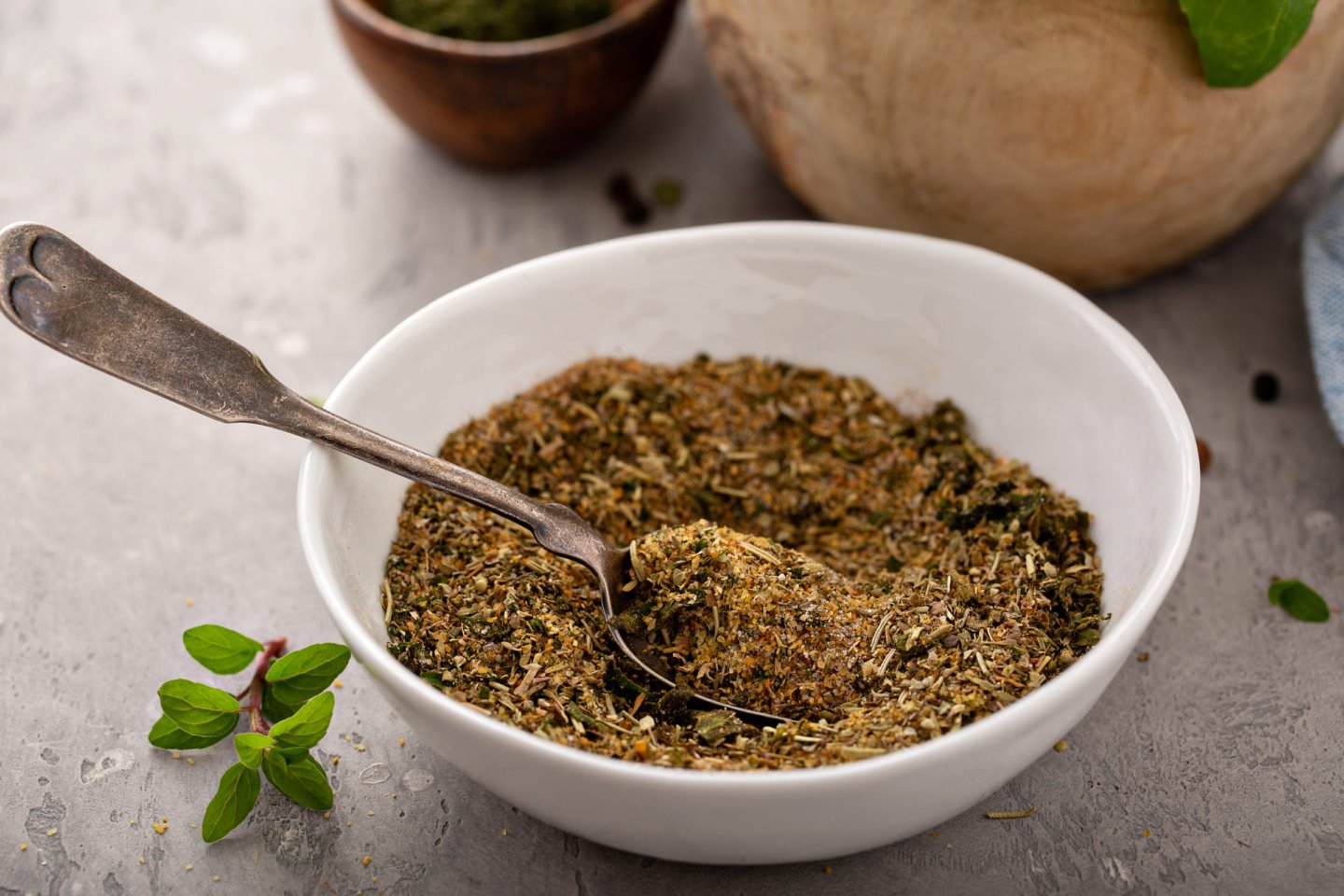
Greek seasoning is a great way to include Mediterranean flavors into your cooking without using different ingredients. Thyme, oregano, marjoram, parsley, garlic, and onion are the key components in this spice. Nutmeg, pepper, basil, cinnamon, and lemon peel are also used in specific mixes. Greek seasoning features pepper and mint overtones, making it a great Italian seasoning replacement.
When used as a substitute, you can start by adding half of the required measurement and add more Greek seasoning as desired.
Za’atar
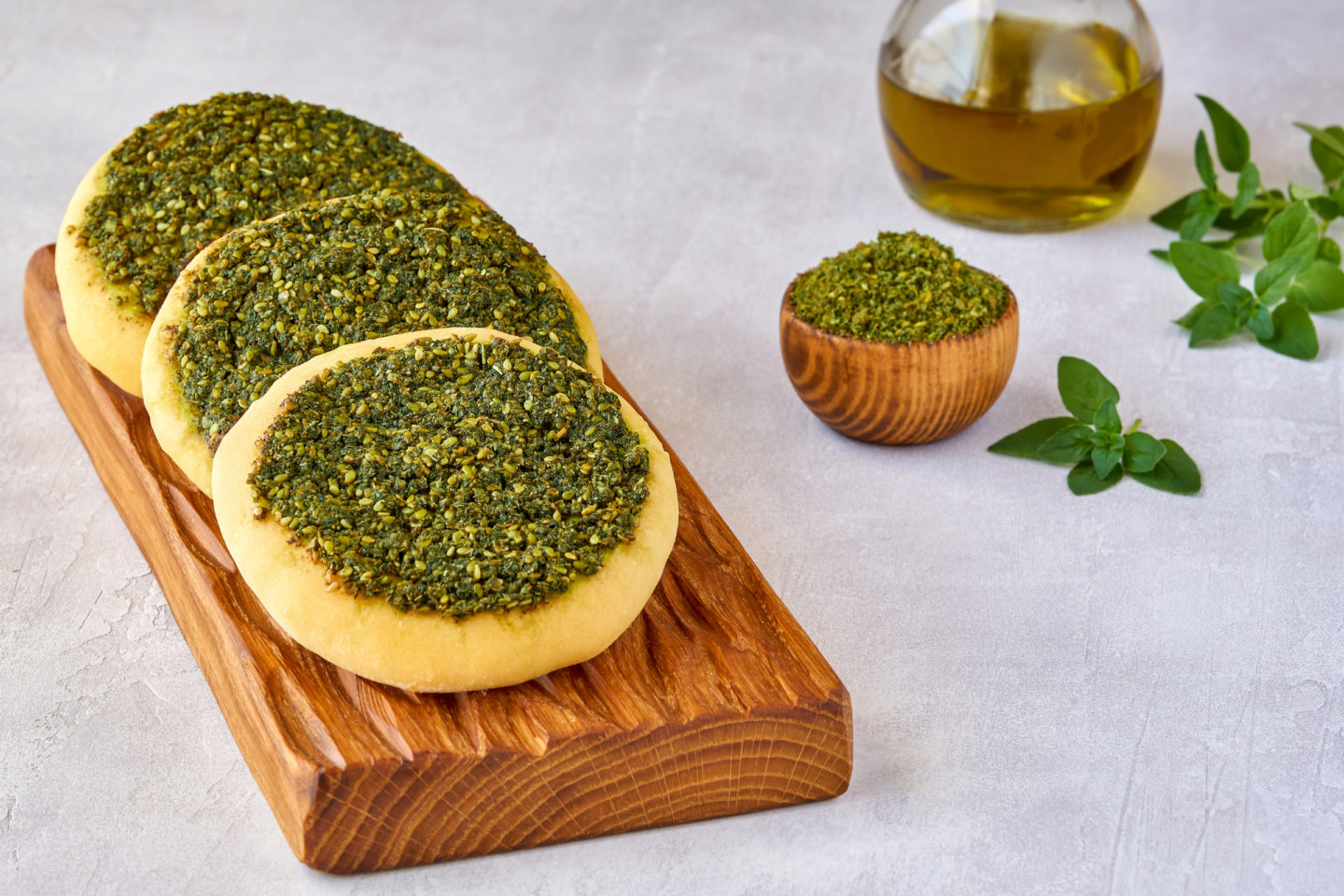
This Middle Eastern spice contains many of the same characteristics as Italian seasoning. The mix also includes marjoram and thyme, which are well-known in Italian seasoning, and sumac and sesame seeds, making it a viable alternative for Italian seasoning.
If you're looking for an Italian seasoning to use in marinades or to sprinkle on garlic bread for taste, Za'atar is a terrific choice. On the other hand, Sesame seeds may not work well in red sauces or soups since they do not dissolve into the sauce as Italian spice does. When used as a substitute, replace a teaspoon of Italian seasoning with ½ teaspoon Za’atar and add when necessary.
Creole Seasoning
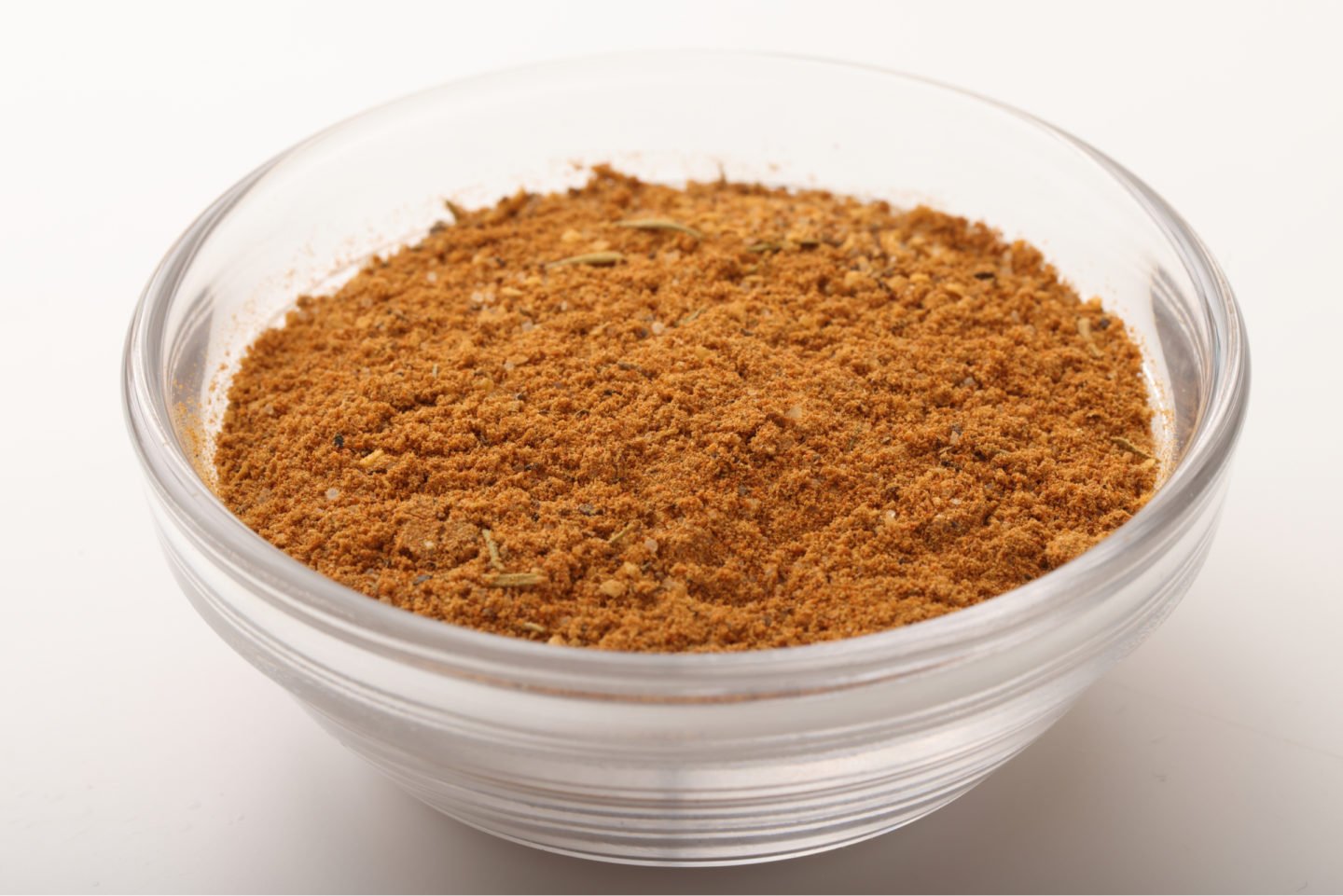
Oregano, basil, black and white pepper, onion powder, garlic powder, paprika, and cayenne pepper are used in Creole seasoning. You can use this seasoning sparingly if you don't want your cuisine to be hot. When making Creole seasoning, you may also leave out the cayenne pepper.
Creole seasoning works best with soups, stews, salads, rice, shrimp, gumbo, jambalaya, and burgers. When used as a substitute for Italian seasoning, use only half of the required amount and add more when desired.
Tuscan Seasoning
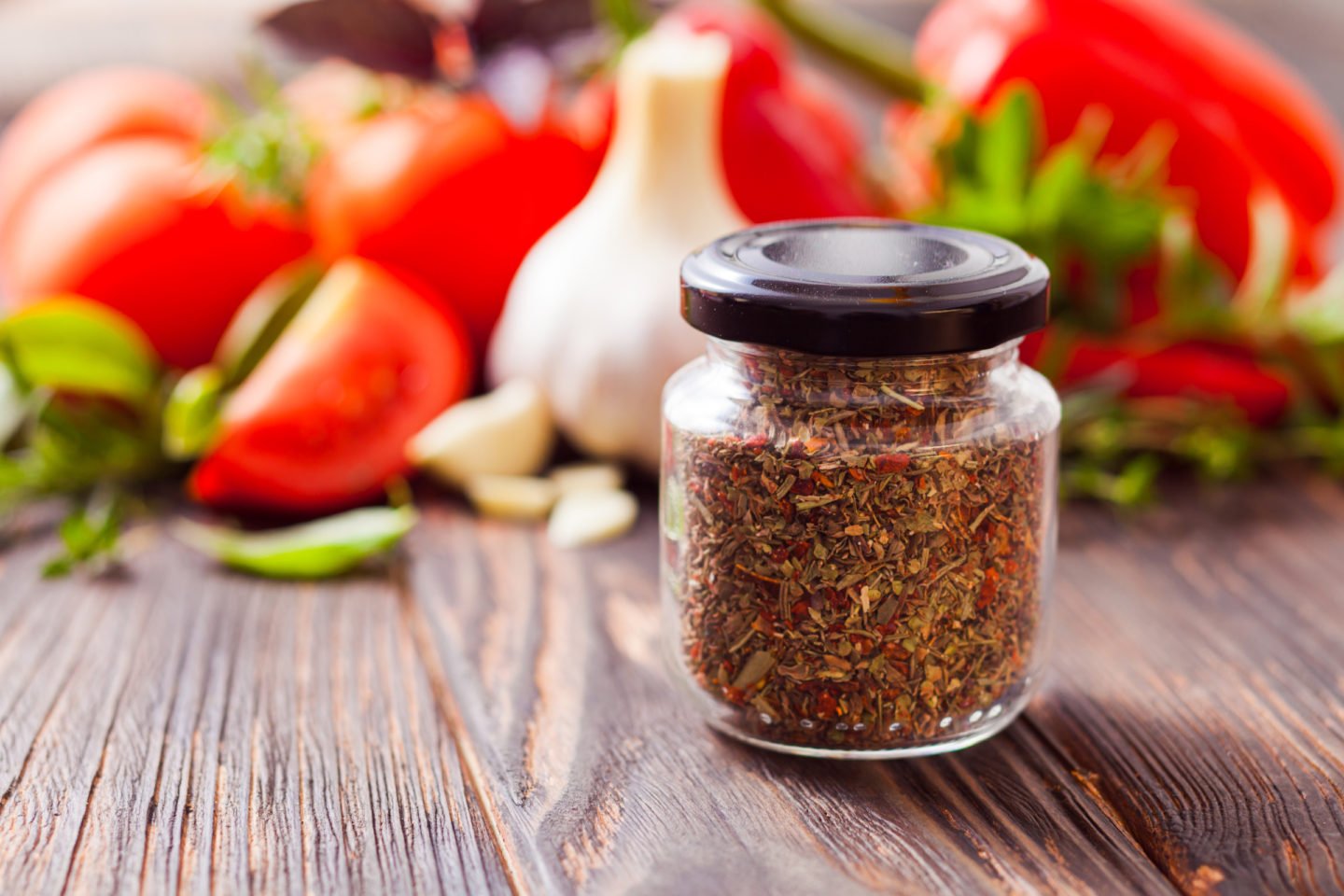
Tuscan Seasoning has a similar flavor profile to Italian Seasoning. However, it has a few more components. It's made out of dried basil, oregano, rosemary, marjoram, and them, with fennel seeds and garlic powder is thrown in for good measure. It provides a rich, sweet, fresh, and peppery taste and aroma.
Tuscan seasoning is a versatile seasoning that goes well with pasta, poultry, vegetables, fish, salads, and bread. If you want to create one at home, simply take all of the mixed herbs and crush them together in a grinder or mortar and pestle to a spice blend. When used as a substitute, you can use a 1:1 Italian seasoning to Tuscan seasoning ratio.
Summary Table
Here's a quick rundown of the best Italian seasoning substitutes for when you're in a pinch and you need an alternative really quick.
| Substitute | Notes |
|---|---|
| Homemade Italian Seasoning | Best option. Combine as many Italian herbs as you have and let the food processor do the work! |
| Fresh Basil and Oregano | Next best thing. Fresh herbs give the best aroma. Basil and oregano are the strongest spices. |
| Dried Basil, Oregano, and Thyme | Thyme adds a sharp minty flavor and a sweet floral scent. Mix ½ tsp of basil and thyme with 1 tsp oregano. |
| Dried Basil | Adds a savory taste to dishes. Often used as a stand-alone herb, it offers a sweet yet peppery taste. |
| Dried Oregano | A staple herb in tomato-centric dishes. Offers a sweet, spicy, and strong earthy flavor. |
| Dried Rosemary | One of the most aromatic herbs. Provides a peppery and lemony taste. A little goes a long way. |
| Marjoram | Milder than oregano and tastes like thyme but with a richer aroma. |
| Herbes de Provence | Notable thyme and rosemary scent, mixed with other spices to provide flavor boost to dishes. |
| Herbes de la Garrigue | Less floral than Herbes de Provence. Contains bay leaf powder and mint. |
| Pizza Seasoning | A staple seasoning. Excellent addition to tomato-centric recipes. Offers rich flavors and aroma. |
| Italian Dressing Packets | Contains added sugar, salt, onion powder, pepper, and parsley — a complete blend of Italian flavors. |
| Greek Seasoning | Oozing with flavors. It contains lemon peel, nutmeg, and cinnamon that adds character to recipes. |
| Za’atar | Contains thyme and marjoram but has sesame seeds and sumac, giving rich flavors to recipes. |
| Creole Seasoning | Contains cayenne and pepper. Its spicy taste complements well with stews and salads. |
| Tuscan Seasoning | Offers a rich, sweet, fresh, and peppery taste and aroma. Closely similar to Italian seasoning. |
Related Questions
How can you make Italian seasoning from scratch?
Recipe
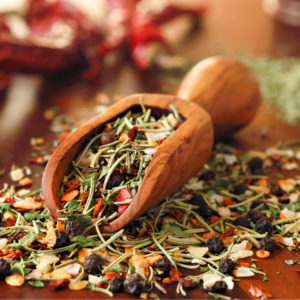
Making Italian Seasoning From Scratch
Ingredients
- 2 tbsp dried basil
- 2 tbsp dried oregano
- 2 tbsp dried parsley
- 1 tbsp dried thyme
- 2 tsp dried rosemary
- 1 tsp dried marjoram optional
Instructions
- In a spice grinder or small dish, combine all ingredients, working in batches if required.
- Using the back of a spoon, grind or compress the mixture until it produces a coarse powder.
- Store in an air-tight container and enjoy your homemade Italian seasoning for 6 months.
What spice is a good substitute for Italian seasoning?
Spices make up Italian seasonings. If you run out of Italian seasoning, you can simply find a spice in your pantry and see if it's an ingredient to Italian seasoning. You can use the Italian herb on itself or use mixed herbs to make homemade Italian seasoning for better taste. As a guide, you can use the following spices: basil, oregano, thyme, parsley, rosemary, and marjoram.
Can you substitute Italian seasoning for Herbes de Provence?
Yes. Herbes de Provence is primarily made up of primary Italian seasoning mixed herbs, making it an excellent substitute. Although it has a more distinct thyme and rosemary scent and taste, you can still use it in a pinch. It’s a spice blend with a powerful taste and rich aroma.

Leave a Reply